Key takeaways
- The three financial statements are the income sheet, balance sheet, and cash flow statement.
- A three-way forecast, also known as the three-statement model, uses assumptions, drivers, and information relevant to a modeler’s business to quickly produce a single consolidated forecast with projections for all three financial statements.
- Net income is found at the bottom line of the income statement and also links to both the balance sheet and cash flow statement.
What are the three financial statements?
The three financial statements are income sheets (profit and loss), balance sheets, and cash flow statements. Together they are known as a three-way forecast or a three-statement model.
They use assumptions, drivers, and information relevant to a modeler’s business to quickly produce a single consolidated forecast with projections for all three financial statements.
How the three financial statements are used in financial modeling
Financial models are spreadsheets that forecast a business’s financial performance into the future. They can use the information provided by the three financial statements to build a financial model.
A three-statement model is the best way to provide granular financial forecasts that explain the future perspective of your business from multiple angles (revenue growth, profitability, capital needs, cash burn, the Rule of 40, etc.).
The easiest way to build a financial model is through financial modeling software. Financial modeling software makes it easy to create accurate financial forecasts without having to wade through incomprehensible mounds of data.
Income statement
An income statement includes the revenues and expenses of a business to show profitability (or lack thereof). Income statements are expressed over time, such as per quarter or per year.
The bottom line of an income statement is the net income. The result of the income statement is either profit or loss, which is why the income statement is also known as the “profit and loss statement.” 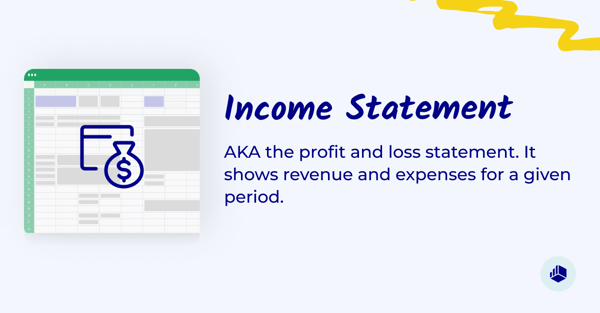
Income statements all have similar formats that include:
- Revenue: The total amount of money earned from the sale of goods or services
- Cost of goods sold (COGS): The direct cost of producing goods or services sold
- Gross profit: The profit earned after subtracting the cost of goods sold from revenue
- Operating expenses: The costs of running the operations of your business
- Operating income: The earnings before interest and taxes (EBIT) after subtracting operating expenses
- Net profit: The profit earned after subtracting all expenses from revenue
- Selling, general, and administrative expenses: The costs of running the business
- Pre-tax income: Earnings before taxes
- Taxes: The total amount paid in taxes
Most income statements also include a calculation of EPS, or earnings per share, which equals the total net income divided by the outstanding shares of the company.
The income statement not only shares the monetary value of a business but also relays the positive or negative performance of each department.
If you know how to review an income statement, you’ll have a clear understanding of the financial stability of a business.
Income statement example
Income statements should clearly show revenue, expenses, gains, losses, and net income:
.png?width=600&height=410&name=income-statement-example%20(1).png)
This income statement example is from our three-statement model template for Excel.
Balance sheet
A company's balance sheet displays its assets, liabilities, and shareholder's equity at a point in time. The balance sheet gives an overview of what a company owns and what they owe. In order to be balanced, a company's assets must equal liabilities and equity together.
- Assets are any resource a company owns that has economic value. This includes what the business owns or is owed (e.g., the accounts receivable balance).
- Liabilities are any obligations or claims to a company’s assets. This may include money owed on mortgages, credit card debt, or accrued expenses like payroll. It’s what the company owes to others (e.g., accounts payable).
- Shareholders’ equity is the amount of money that would be paid to shareholders if all assets were liquidated and the company’s liabilities were paid.
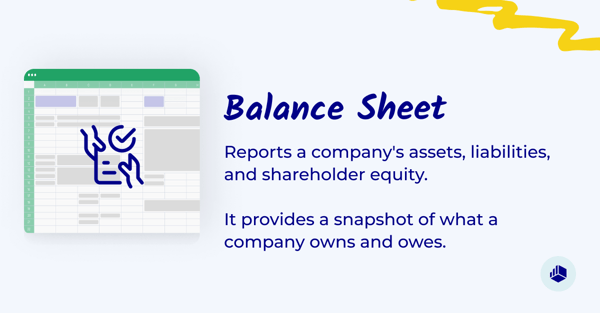
When paired with the income statement, the balance sheet shows how much cash or investment you need to support the sales and gross profit on the income statement.
Balance sheets provide detailed descriptions of a company’s finances at one point in time, so it’s helpful to look at previous balance sheets when assessing a company’s overall financial standing.
Balance sheet example
Balance sheets record assets, liabilities, and shareholders’ equity, which can all be broken down further:
.png?width=600&height=345&name=balance-sheet-example-1%20(1).png)
.png?width=600&height=323&name=balance-sheet-example-2%20(1).png)
This balance sheet example is from our free three-statement model template for Excel.
Cash flow statement
As the name suggests, the cash flow statement shows any increases or decreases in cash. It displays the change in cash per period and the starting and ending cash balance.
A cash flow statement documents the cash made by a business through three primary ways: operations, investing activities, and financing activities.
The sum of these three segments is called net cash flow.
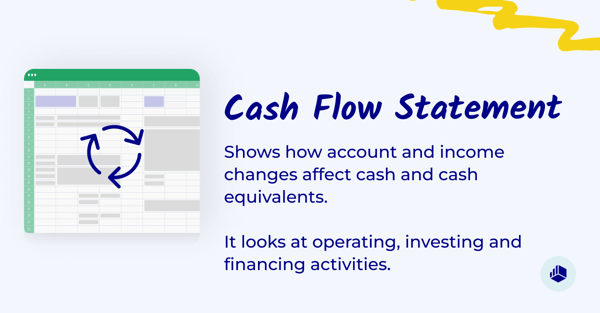
Having this in-depth view of the cash coming in makes the cash flow statement critical when determining the overall financial position of a company.
Cash flow from operations
Cash flow from operations shows the amount of money a company brings in from its regular business activities. It’s the first section of a company's cash flow statement, along with the financial activities and cash from investing.
Operating activities include any spending or sources of cash that are involved in a company's day-to-day business activities. There are two major methods for calculating cash flow, although both should give you the same results in the end:
Direct method
This is when a company records all transactions on a cash basis and displays the information on the cash flow statement using cash inflows and outflows during the accounting period. It only reflects what’s already happened.
For example, the direct method records cash spent on a company's operations.
Indirect method
This method takes into account net income and net expenditures in a given period. It begins with net income on an accrual accounting basis and works backward to achieve a cash basis figure for the period.
This means you have to credit and debit your asset and liability accounts respectively to determine the implied cash flow, even if cash has not changed hands yet.

Cash flow from investing
Cash flow from investing is the part of a cash flow statement that shows how much cash has been generated or spent from various investment-related activities in a specific period.
Negative cash flow from investing isn’t necessarily a bad thing, because these investments could benefit the company over time.
Any change to the property, plant, and equipment (PPE) line item on the balance sheet is considered an investing activity. PPE refers to the long-term, tangible assets of a business that are vital to operations.
Another line item that measures capital investment is capital expenditures (CapEx). An increase in capital expenditures means the company is investing in future operations. Companies with a significant amount of capital expenditures are usually in a state of growth.
Download a free statement of cash flows template for Excel
Cash flow statements will include cash flow from operations, investing, and finances:
.png?width=600&height=402&name=cash-flow-statement-1%20(1).png)
Grab our freestanding statement of cash flows template for Excel.
How the three financial statements are linked
The income statement, balance sheet, and cash flow all connect to create the three-statement model.
How?
Changes in current assets and liabilities on the balance sheet are reflected in the revenues and expenses that you see on the income statement. Cash flows provide additional information about cash assets listed on a balance sheet and are also related to the net income line of the income statement.
When analyzing three financial statements and how they’re connected, the simplest approach is to start with the income statement, work to the cash flow statement, and then to the balance sheet.
Here are a few ways the three basic financial statements are linked:
Net income
While there are many ways the three financial statements are linked to each other, net income is one of the easiest to envision.
Net income is the end result of the income statement—the literal “bottom line.” This calculation is included in both the balance sheet and cash flow statement.
Net income is the top-line item in the cash flow statement’s “operations” section.
In the balance sheet, net income flows into the stockholder’s equity through retained earnings. Retained earnings are equal to the previous period’s retained earnings, plus net income from this period, minus dividends from this period.
Depreciation
Depreciation is usually on all three financial statements, even if it’s not explicitly listed as “depreciation.”
On income statements, it’s considered an operating expense.
In cash flows, depreciations are added back into the “cash flow from operating activities” section as non-cash expenses.
On balance sheets, depreciation reduces the CapEx, which is the money a company spends to either acquire or maintain assets.
Working capital
Net working capital is the difference between a company’s current assets and liabilities. Any changes in assets and liabilities in the balance sheet must be adjusted on the statement of cash flow statement to reflect the actual cash paid or received by the business.
This number can then be included back in the revenues or expenses section of the income statement.

Financing
When issuing debt, the interest expense appears on the income statement and as the principal amount of debt owed on the balance sheet.
The change in the principal amount owed is reflected in the “cash from financing” section of the cash flow statement.
Cash balance
Once the sum of cash from operations, cash from investing, and cash from financing are added to the prior period closing cash balance, the total becomes the current period closing cash balance on the balance sheet.
This is the exciting moment when you see whether or not your balance sheet actually balances!
Download the free 3-statement model template
No single financial statement tells a complete story. But together, they can provide powerful, insightful data for a company and its investors.
Plus, our free three-statement model template does all of the work for you.
It links your profit & loss (income statement), balance sheet, and cash flow projections together so you can forecast your company's financial health and future cash position.
[Download the template]
Conclusion: Understand the three financial statements
The three core statements are the income statement, balance sheet, and cash flow statement. Together, they create a picture of a company's financial condition that is useful to stakeholders as they read financial statements.
Ready to put the info from this post into action? Check out our free Excel template, the Basic 3-Statement Model.
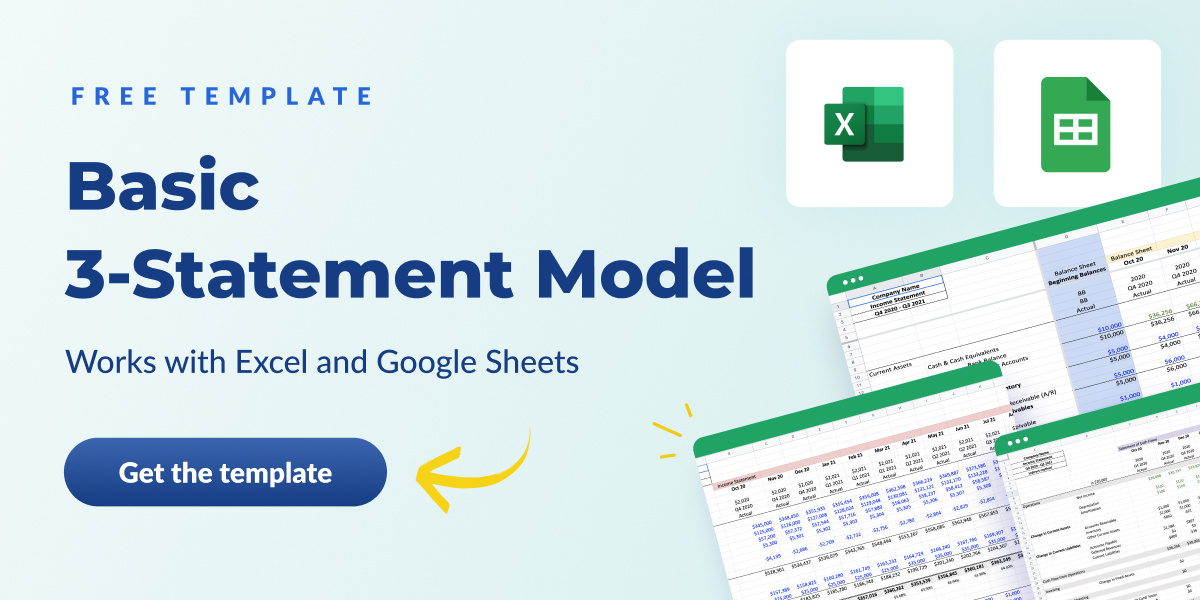


.png)


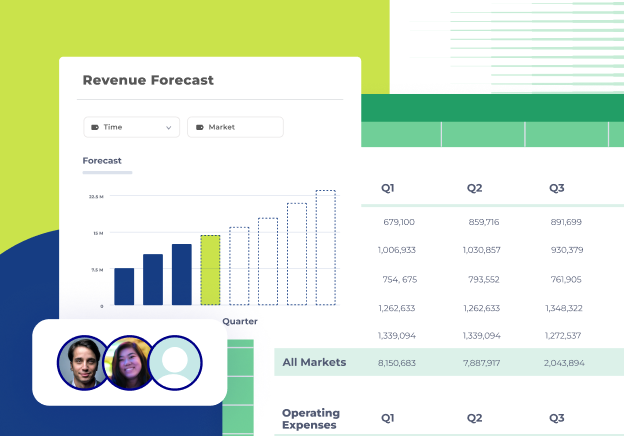


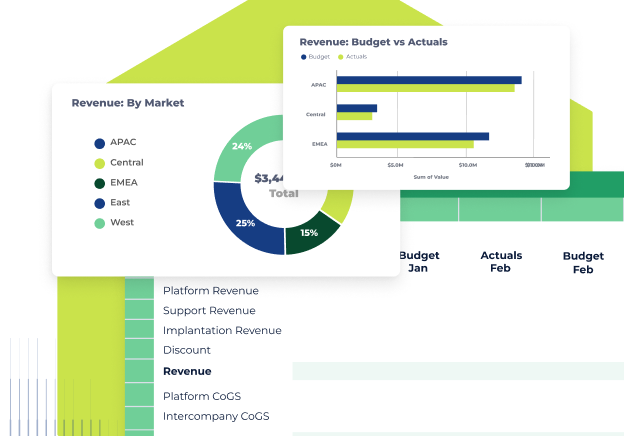



.png)

.png)

.png?width=600&height=410&name=income-statement-example%20(1).png)

.png?width=600&height=345&name=balance-sheet-example-1%20(1).png)
.png?width=600&height=323&name=balance-sheet-example-2%20(1).png)


.png?width=600&height=402&name=cash-flow-statement-1%20(1).png)

.png)
.png)
.png)